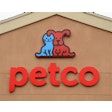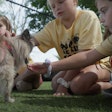
Adapted from a press release:
The inflationary headwinds confronting the entire pet food industry became evident in the financial results of refrigerated, fresh pet food company Freshpet. In the second quarter of fiscal year 2022, despite net sales of US$146.0 million, Freshpet suffered a net loss of US$20.6 million. Both of those figures, for better or worse, were higher in the same period last fiscal year. While Freshpet’s sales increased by 34.4%, up from US$108.6 million in Q2 FY21, net loss increased from US$7.5 million.
Net loss was US$20.6 million for the second quarter of 2022 compared to net loss of US$7.5 million for the prior year period. The increase in net loss was due to increased SG&A, which includes increased media spending of US$9.9 million, partially offset by higher net sales and increased gross profit.
Net sales for the second quarter of 2022 were driven by velocity, pricing, distribution gains and innovation, according to a press release from Freshpet.
Gross profit was US$52.2 million, or 35.8% as a percentage of net sales, for the second quarter of 2022, compared to US$43.1 million, or 39.7% as a percentage of net sales, in the prior year period. For the second quarter of 2022, Adjusted Gross Profit was US$61.8 million, or 42.4% as a percentage of net sales, compared to US$50.1 million, or 46.1% as a percentage of net sales, in the prior year period. The decrease in gross profit as a percentage of net sales and Adjusted Gross Profit as a percentage of net sales was primarily due to inflation of ingredient cost and labor, and quality issues, partially offset by increased pricing.
"We made solid progress on our most important long-term value drivers in the second quarter, despite external challenges such as inflation and some short-term internal challenges with our operations," Billy Cyr, Freshpet's chief executive officer, said in a press release. "We are encouraged by our strong consumption growth in the face of higher pricing, the acceleration in our household penetration growth, and our strong production performance that supported it. However, the combination of inflation and short-term operating challenges negatively impacted our bottom line in the quarter, and we are reflecting those factors in our 2022 outlook. We continue to take the necessary corrective actions, such as another price increase to offset inflation, and are steadfastly committed to fixing the operational issues so that the rewards of our strong growth become more apparent."
Freshpet Performance in first six months of 2022
Net sales increased 37.7% to US$278.2 million for the first six months of 2022 compared to US$202.0 million for the first six months of 2021. Net sales for the first six months of 2022 were driven by velocity, pricing, distribution gains and innovation.
Gross profit was US$97.0 million, or 34.9% as a percentage of net sales, for the first six months of 2022, compared to US$79.4 million, or 39.3% as a percentage of net sales, in the prior year period. For the first six months of 2022, Adjusted Gross Profit was US$117.2 million, or 42.1% as a percentage of net sales, compared to US$93.7 million, or 46.4% as a percentage of net sales, in the prior year period. The decrease in gross profit as a percentage of net sales and Adjusted Gross Profit as a percentage of net sales was primarily due to inflation of ingredient cost and labor, and quality issues, partially offset by increased pricing.
Net loss was US$38.1 million for the first six months of 2022 compared to net loss of US$18.4 million for the prior year period. The increase in net loss was due to increased SG&A, partially offset by higher net sales and increased gross profit.
Freshpet revenue up in 2021, but S&P beats stock
Continuing five consecutive years of accelerating growth, refrigerated pet food company Freshpet’s revenue grew 33.5% in 2021, according to analysts with Investment bank Cascadia Capital. Despite this growth, Freshpet’s stock performed below the S&P500 between April 2021 and 2022. Freshpet is a U.S.-based manufacturer of fresh, refrigerated dog treats and food for dogs and cats. Brands include Freshpet Select, Fresh Treats, Nature's Fresh, Vital, Dog Joy, Deli Fresh, Homestyle Creations and Dog Nation.
A 6% increase in household penetration drove much of Freshpet’s growth in 2021, as the company expanded to reach 4.2 million households in 2021, according to Cascadia’s analysts. Likewise, an 18% increase in buying rate helped the company. Out-of-stock problems dragged on this growth though. Online sales now represent 7.4% of total company revenue. Nevertheless, Freshpet’s gross margin declined due to wage increases at plants, network capacity investments and ingredient cost inflation.
Cascadia Capital follows its own index of publicly traded pet industry stocks, including Nestlé, J.M Smucker, Chewy and FreshPet. Smucker and Purina’s stocks finished nearly on par with the S&P500 in 2021, while Chewy and FreshPet finished lower. Cascadia’s analysts examined the drivers of this growth in “Pet Industry Overview Spring 2022.”
Freshpet growth in 2021
Freshpet grew in a range of retail channels.
- Stores +4% (23,631 locations),
- Mass +25%,
- Grocery +23%,
- Major pet specialty +39%,
- E-commerce +73%
- 59% click-and-collect,
- 27% last mile delivery,
- 14% fresh online
Supporting this growth, Freshpet has increased production capacity. The company added equipment capacity to support an additional US$160 million in production and staffed capacity increased to support US$170 million in production.
















